- News
- Reviews
- Bikes
- Components
- Bar tape & grips
- Bottom brackets
- Brake & gear cables
- Brake & STI levers
- Brake pads & spares
- Brakes
- Cassettes & freewheels
- Chains
- Chainsets & chainrings
- Derailleurs - front
- Derailleurs - rear
- Forks
- Gear levers & shifters
- Groupsets
- Handlebars & extensions
- Headsets
- Hubs
- Inner tubes
- Pedals
- Quick releases & skewers
- Saddles
- Seatposts
- Stems
- Wheels
- Tyres
- Tubeless valves
- Accessories
- Accessories - misc
- Computer mounts
- Bags
- Bar ends
- Bike bags & cases
- Bottle cages
- Bottles
- Cameras
- Car racks
- Child seats
- Computers
- Glasses
- GPS units
- Helmets
- Lights - front
- Lights - rear
- Lights - sets
- Locks
- Mirrors
- Mudguards
- Racks
- Pumps & CO2 inflators
- Puncture kits
- Reflectives
- Smart watches
- Stands and racks
- Trailers
- Clothing
- Health, fitness and nutrition
- Tools and workshop
- Miscellaneous
- Buyers Guides
- Features
- Forum
- Recommends
- Podcast
TECH NEWS
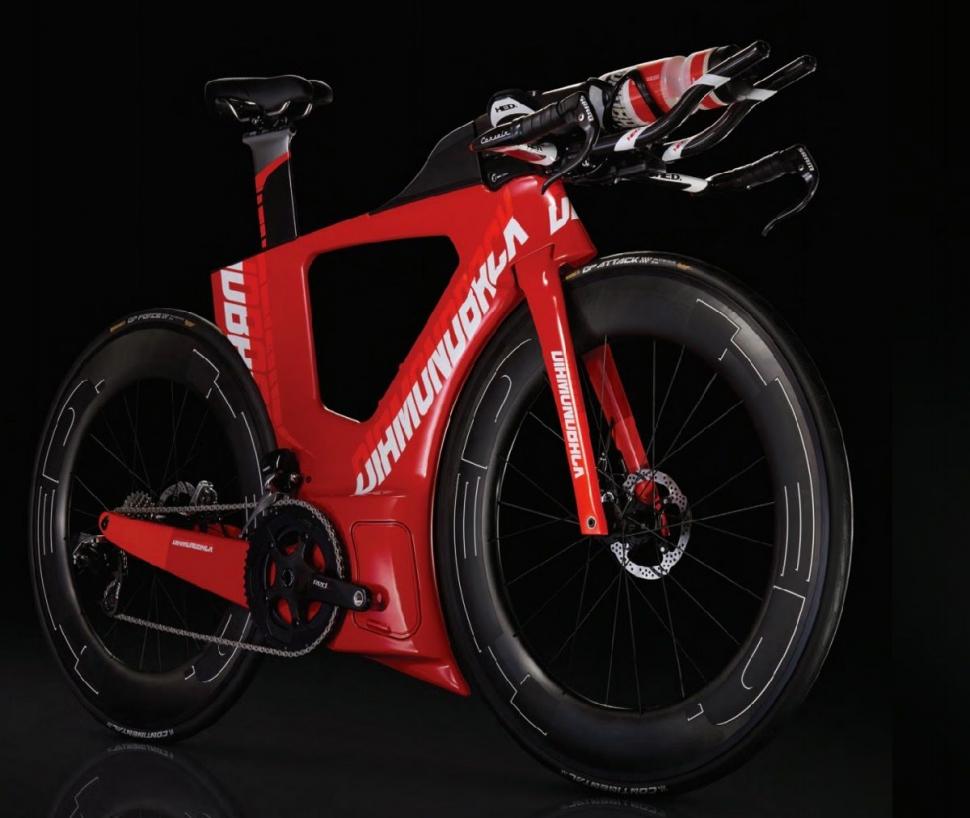 Diamondback Andean - 1.jpg
Diamondback Andean - 1.jpgWow! Diamondback reveals “the fastest triathlon bike in the world”
Diamondback has released details of an extraordinary looking new model called the Andean that it claims is “the fastest triathlon bicycle in the world”. This isn’t a concept bike, it’s going into full production.
The Andean is designed around what Diamondback calls its Aero Core – the section of the frame that sits directly between the wheels. This is intended to be a single large airfoil.
“This bike was designed from the centre of the wheels—the least aerodynamic area—in towards the middle of the frame, then up,” says Diamondback.
The brand says that this approach leads to an improvement in the laminar flow across the entire system, dramatically reducing drag at every yaw angle.
Diamondback says that is has worked on the design with Dr Philippe Lavoie and his team at the University of Toronto Institute for Aerospace Studies (UTIAS), aerodynamicists from outside the cycling industry.
“Their half-scale wind tunnel provides a superior environment for testing, with fewer variables to control than a larger tunnel,” says Diamondback. “The facility allowed us to adjust turbulence more easily than ever before, producing a very detailed diagnostic testing ability.”
If you want to know more about the research and development of the Andean, you can pick the bones out of Diamondback’s Andean White Paper where it is discussed in detail.
The result of “CFD modelling, hundreds of prototype iterations, and weeks in the wind tunnel”, the Andean is a very unusual looking bike that has taken its design cues from MotoGP, according to the team behind it. The Aero Core section hugs the rear of the front wheel, the seat tube extends way back around the leading edge of the rear wheel, and there are no seatstays.
There’s loads of storage space on offer inside the frame and in compartments on top of the top tube. This avoids the need to add non-aero elements, or to tape supplies to the frame.
You’ll notice that Diamondback has chosen to spec disc brakes.
“Disc brakes outperform rim brakes and their callipers are more easily hidden from the wind,” says Diamondback. “And given the wheels-first design process of Andean, rim brakes just aren’t in the cards: the future of wheel technology will undoubtedly feature discs.”
The bike is designed to use a SRAM 1x (single chainring) drivetrain.
“Bulky front derailleurs and aerodynamic engineers have never been on the friendliest of terms,” says Diamondback. “Luckily for the Andean Project, the time is right to ditch these antiquated mechanisms.”
Strong stuff!
“It’s never made more sense to go with a single front chainring: not only does it get rid of the front derailleur’s weight and drag, but it does the same for an unused spinning sprocket. With a more streamlined bottom bracket blending into the Aero Core, air flows much more smoothly past these once troublesome areas.”
Is the Andean UCI legal? Not even close! No, this is a triathlon bike. Triathlon bike and equipment rules are different from those of the UCI in many respects. Diamondback’s existing Serios models do conform to UCI rules.
You wouldn’t expect the Andean to be cheap, would you? It’s available in four sizes and many build options priced from US$6280 to US$8600.
For more details go to www.diamondback.com/andean
Mat has been in cycling media since 1996, on titles including BikeRadar, Total Bike, Total Mountain Bike, What Mountain Bike and Mountain Biking UK, and he has been editor of 220 Triathlon and Cycling Plus. Mat has been road.cc technical editor for over a decade, testing bikes, fettling the latest kit, and trying out the most up-to-the-minute clothing. He has won his category in Ironman UK 70.3 and finished on the podium in both marathons he has run. Mat is a Cambridge graduate who did a post-grad in magazine journalism, and he is a winner of the Cycling Media Award for Specialist Online Writer. Now over 50, he's riding road and gravel bikes most days for fun and fitness rather than training for competitions.
Latest Comments
- Steve K 29 min 59 sec ago
APPGs (not just this one) are pretty low down the influence ladder, and their recommendations generally are low impact. (Unlike Select Committees,...
- BikingBud 40 min 55 sec ago
Absolutely this, riders gonna crash it is a race. And tempering any aspect of that competitiveness would detract from the race but developing...
- Capt Sisko 1 hour 40 min ago
One of the reasons I like Torq products is because they do not use Sortbitol as a sweetener. As those that are sensitive to Sorbital will know, and...
- webbierwrex 2 hours 1 min ago
I came to say the opposite, I always liked Giro shoes but they're insanely narrow. I hope they did change the fit.
- Aluminium can 6 hours 51 min ago
Frame weight is about a hundred grams less than a CAAD 12 disc, which can be picked up cheap these days on gumtree. Heck, get the CAAD12 non disc...
- Dnnnnnn 10 hours 44 min ago
You're too kind. They just seem to be unpleasant trolls.
- Jogle 11 hours 39 min ago
And in Southampton today we had another example of those entitled ambulances going through red lights without a care for anyone else!...
- TheBillder 12 hours 54 min ago
The spokes and nipples are not anodised for environmental reasons, but the rims are. Which is a lot more metal. Hmm...
- Rendel Harris 13 hours 33 min ago
I'm afraid so, anything operated by TfL apart from the Woolwich ferry and the Silvertown Tunnel bike bus when it opens next month.
- chrisonabike 14 hours 15 min ago
That's a bit hard on the cat...
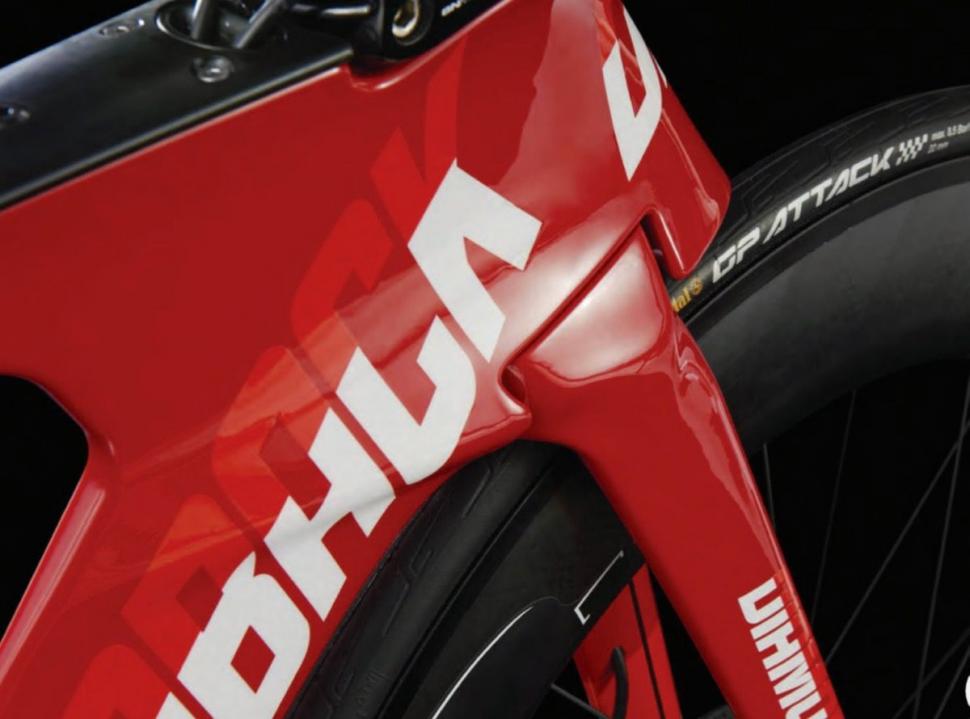
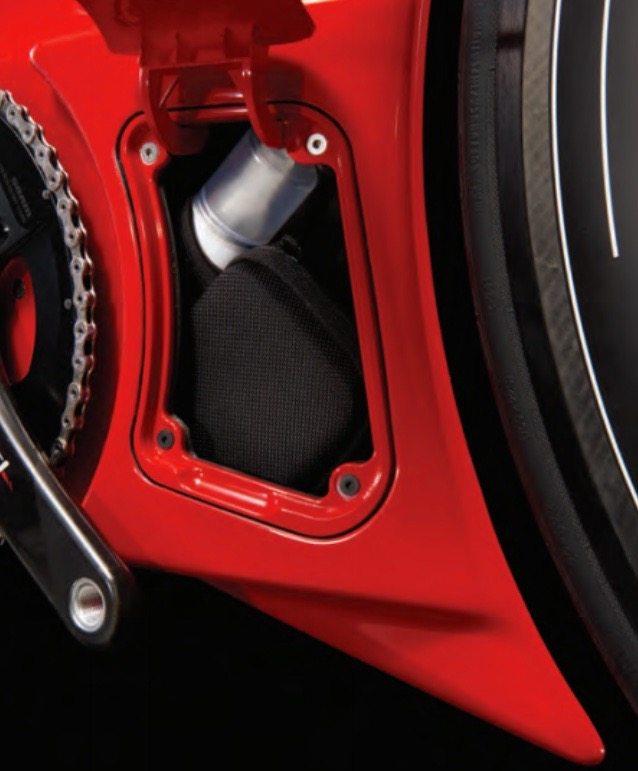
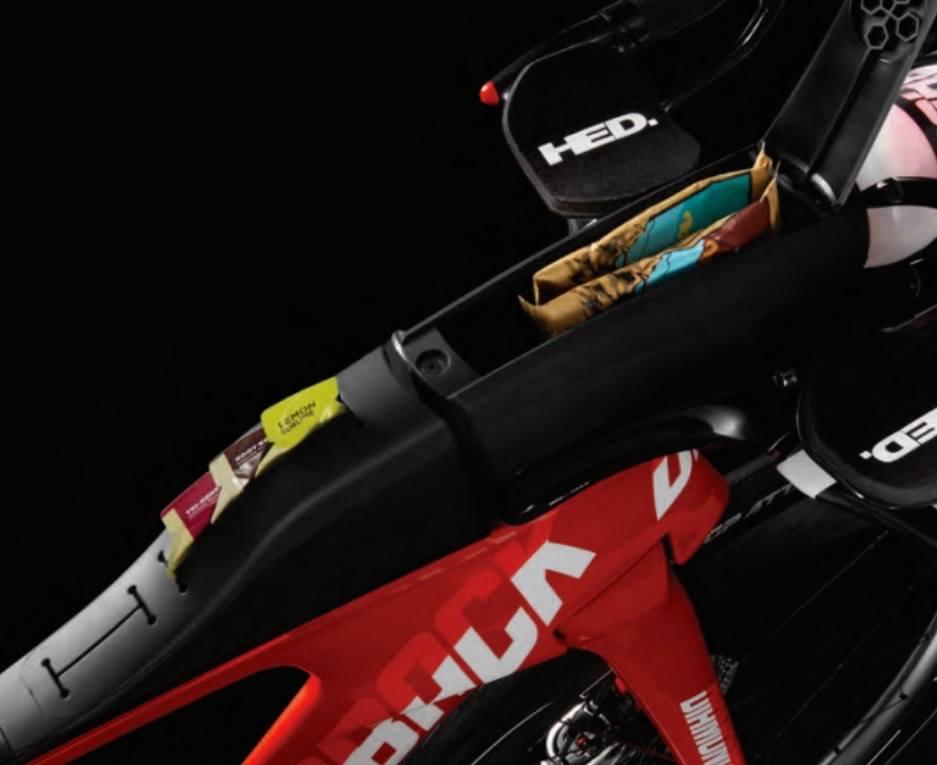
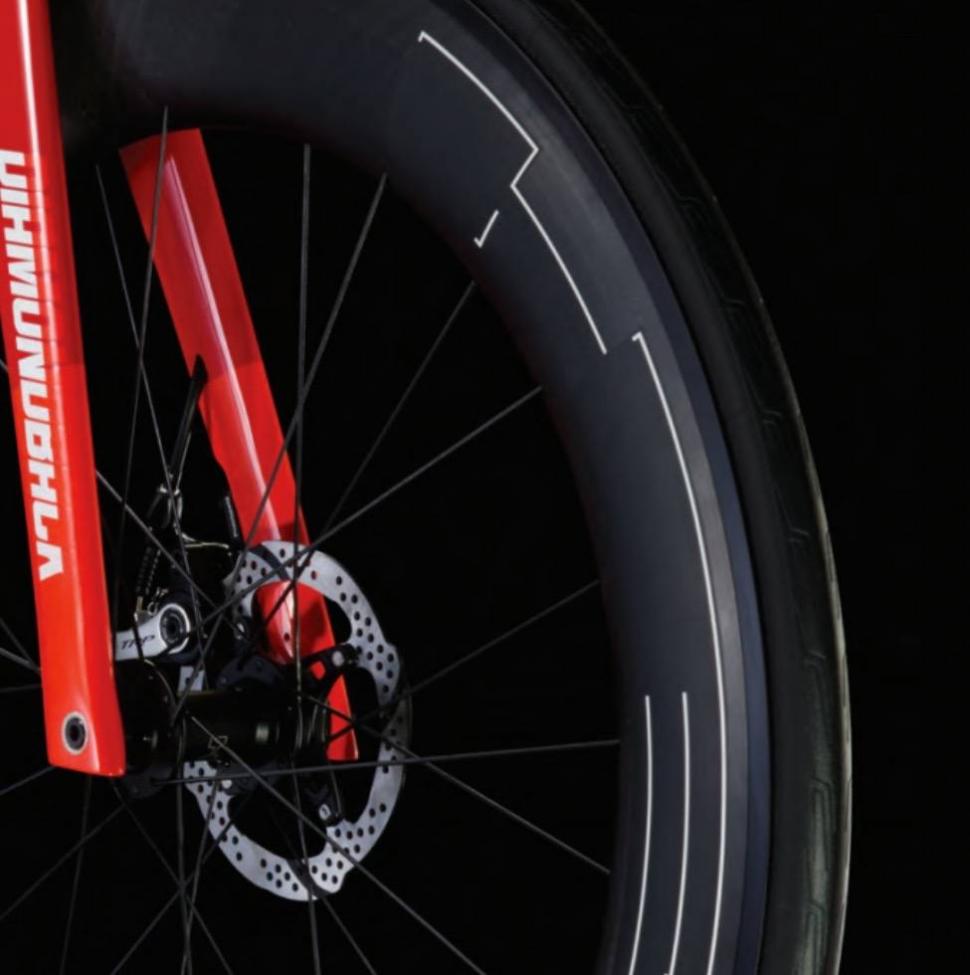
Add new comment
33 comments
Event though all triathlon and a few TT rules have been rather lax none of the governing bodies have bothered much as nobody has been stretching things too far.
There's a danger that the ITU, WTC, USAT and more are going to take one look at this and think .....time for some new rules.
Cannondale did a wierd looking bike back in the '90's for a trade show very similar to the Diamondback in some respects.......
http://factoryjackson.com/wp-content/uploads/2015/04/Cannondale-Roller-kate-and-Robocop-2000x707.jpg
Inline skate wheels instead of a front wheel were interesting to say the least and the thing was steered by two joysticks.
It was never ridden and the 'bike' in question was made of a wooden frame with a carbon wrap around it. If memory serves me well, it took a couple of blokes just to lift it onto the display stand as it weighed a ton!!!
Can't remember whether it was either a 26" or a 24" rear wheel (tri-people back then did like strange wheel sizes), fantastic Flite saddle and the sexy Coda/Magic Motorcycle chainset that was SERIOUSLY light at the time.
The chainset used a splined B/B and I'm sure Shimano nicked the idea for Octalink B/B's later on.
Think I must be one of the few people in the world that still have a carbon-railed Flite saddle that is still in use!!!!
I like it. Just sayin...
It's basically a motorbike without the motor, so I'd probably ride it making paaaarpp paaaarrrpp sounds everywhere.
Anything that distracts the eye from the cone head riding it, wearing only budgie smugglers and a wife-beater top is good thing IMHO.
Cyclist criticing the fashion/style of tri gear...
The ultimate pot calling the kettle black statment!
Like that bike. It's bold, it's different, it's courageous.
To the aesthetes on here who say it's ugly, who cares?
If you're racing (i.e. competing rather than completing), would you be happy saying, "Those 10 places I lost? I don't mind, because my bike looks better than theirs".
If it's actually faster, or they can convince racers it's faster, it will sell.
The Diamondback AEC Routemaster..
Holy cocking shitbaggins.
Would this be legal in Ironman competitions?
Hell yeah. Sod the UCI and draft-legal bullshit.
112 miles: bring the technology
ming...ming...ming...ming...
ming...ming...ming...ming...ing
This monster or a "bike"
-there are levels of existence we are prepared to accept - The Architect.
Throw it in the sea, and don't look back
yup, far too techy. I thought tri sport was all about the athlete, what do I know
I'm worried that it might not sink.
Do triathletes actually use bikes like this any more? When I see triathlon on the tele they are riding standard road bikes.
Short answer: yes.
Medium-length answer: on the vast majority of long races (WTC), pretty much everyone, though on some longish (ITC) races, it's UCI rules. On shorter races, amateurs usually run TT bikes if the organizer labels them draft illegal, which from what I gather is fairly common. Olympic and Olympic distance ITU pro athletes can run shortish clip-ons but most don't bother as drafting is legal.
Long answer: consult an actual triathlete.
Short answer: who cares.
Medium length answer: really, you watch triathlons? I had no idea it was a spectator sport.
Long answer: There is no long answer.
I was to careful to say see triathlon on the tele rather than watch.
I suspect all that enclosed space is a cover for mechanical assistance. No, not an electric motor, but gyroscopic self-balancing. It is intended for triathletes, after all. Imagine the competitive advantage of being able to push your bike up to speed in the transition area, hop on, and then be able to concentrate on getting your shoes on without all that bothersome business of staying upright. Add in radar-controlled steering and those terrifyingly flat and straight sections of road, with other competitors dangerously riding along them in the same direction, would cease to be the problem they are now.
Looks fast. But as has been mentioned, I would not want to ride this through crosswinds or up anything remotely steep.
It looks like it would catch the crosswinds a lot. I wonder if that is the most aero setup, or whether it would perform even better with a rear disk wheel? Obviously it would catch the crosswinds even more then but I am just curious from an aerodynamic perspective.
disk wheels aren't allowed. Neither are disk brakes though, apparently. Or frames of "unusual design".
https://www.britishtriathlon.org/britain/documents/age-group/policies-an...
Disk wheels are allowed when you're not dicking around with draft-legal bullshit
Or Kona. It's too windy there. They can be outlawed on the day of draft illegal multisport races if the conditions dictate that riding one would make the race less safe.
Draft legal triathlon is a different kind of racing. Both have merits as contests and drawbacks too. I loved racing draft legal a few years ago. It's the best way to conduct an elite, spectator friendly competition, without the need for race walking style disqualification/attrition battles with protests, reinstatements and confusion.
The Diamondback does a job. It's not supposed to look pretty. It's against the rules to accept "outside assistance" during Ironman races. That includes receiving a musette, a spare tube, or any mechanical repair. The luggage space is entirely justifiable.
Would the lack of seat stays make the rear wheel likely to touch the seat tube on rough roads or pot holes?
That page applies to draft legal racing only. Which for non-elites, largely applies only to races which are (a) sprint distance (~20km on the bike), and (b) qualifiers for Euro or World championships, or those events themselves.
Disk wheels very definitely allowed in most other races - I do it all the time.
So if it's designed to be run with a single ring becuase the designers have what appears to be a major hatred of front mechs, why do all pictures show a bike with a front mech and therefore presumably two chainrings?
Like most triathlon and TT bikes, it's ugly as sin (personal opinion) but I love the approach and the willingness to do something a bit out of the ordinary. I expect the anti-disc-brake brigade will be out with the pitchforks shortly though :-).
It just needs a sprinkling of testosterone.
Pages